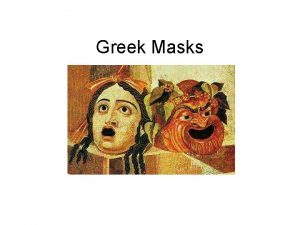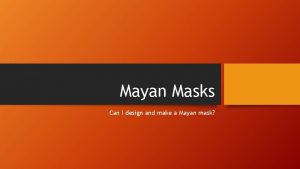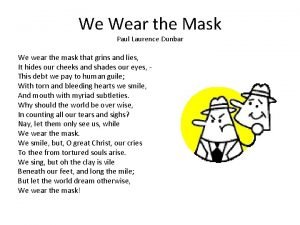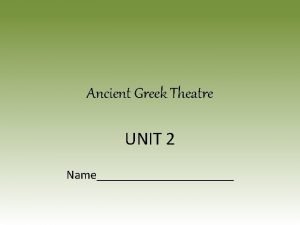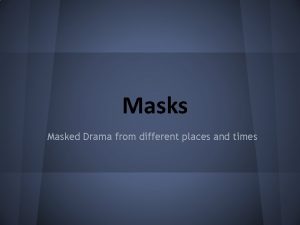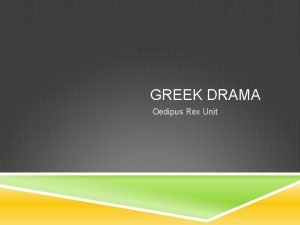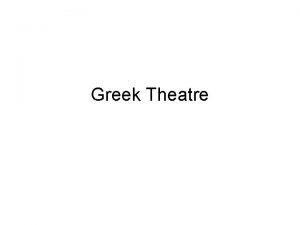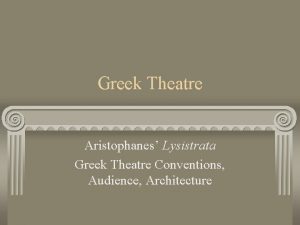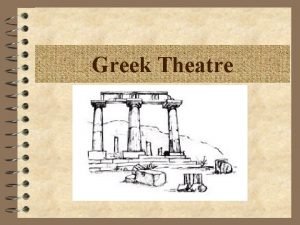Greek Theatre Masks When did they wear masks











- Slides: 11

Greek Theatre Masks

When did they wear masks. . . ? In ancient Greek drama, all the actors were men. They wore masks to indicate the character that they were playing (e. g. woman, old man) or the emotion that they were showing (e. g. anger, sadness, joy).

Actors in Greek plays often played several different parts and would put on a different mask for each part that they played. The members of the chorus wore masks that were usually similar to each other, but completely different from those of the leading actors.

The masks were often brightly coloured with exaggerated features e. g. Large eyes, large nose and mouth. This allowed the faces to be seen by all the people in theatre, even those sitting in the back rows. Usually the masks were made of a lightweight material: e. g. linen, leather, cork or carved wood.

To create the shape of the mask, the artist moulded the material around a marble or stone face (like papier-mâché). Human or animal hair was used for the hair.

Task 1: 1. Look at a selection of Greek masks, can you identify the emotions? 2. Can you create the emotions from the masks? Use a mirror to help you, look at your facial features. Discuss how you would make this on a mask. 3. Using the design sheet to plan 4 potential masks designs each with a different emotion, think about the information and examples we have looked at!

Task 2: 1. Re-read the information about when Greek actors wore masks, what emotions did they create through wearing masks? 2. Look at your four designs, which one are you going to create? 3. Draw your design in more detail, thinking about colours and what equipment you will need.

Task 3: Start to make your mask: Paper Mache • Balloon/ mask • Newspaper strips • Paper Mache mix (glue and water or flour and water) Remember your emotion and design! • Get layering!! Smoothly. . . Patience!

Task 4: • Check your mask is dry • Carefully remove your mask from the balloon/mask • Cut out the facial features to your mask • Start to paint your mask- remember the information from the start!

Task 5: • Start to add the details to your mask (look back to your design) • Attach your fastening to your mask.

Evaluate your mask. . . What went well? What did not work? How could you improve it next time? Remember to take a picture with your mask!

